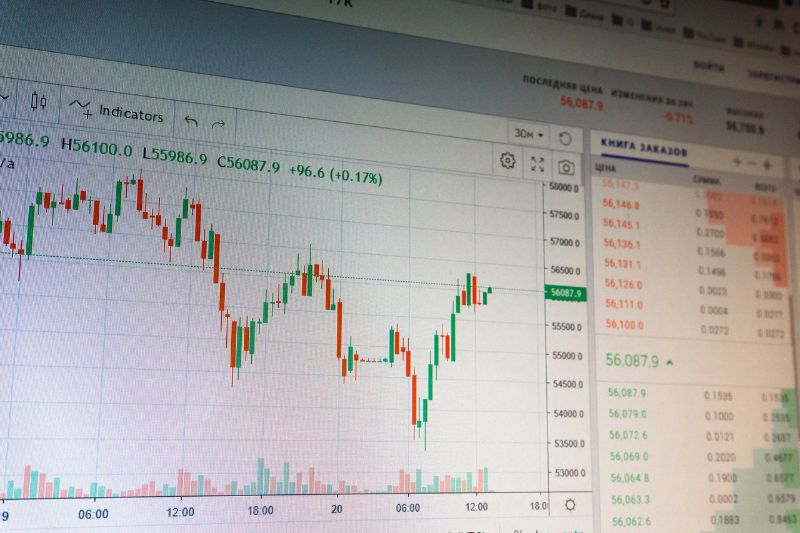I generally end most articles with a big summary, but I’m going to keep this one brief.
People invest in non-dividend paying stocks because they prefer to put their money into a firm that reinvests its profits in the future. They hope that by reinvesting gains, the stock price will rise in the future, allowing them to sell it for a higher profit.
Capital gains are the name for this form of revenue. It can not only be incredibly profitable, but it can also help you expand your overall net worth tax-free.
While firms that pay dividends (such as Microsoft) can still achieve rapid growth, it is less likely because a portion of their revenues is paid to investors.
I enjoy collecting regular dividends for doing nothing, but I also enjoy cashing out on above-average returns from stocks that don’t pay dividends in the form of capital gains. – This is something I did with Snapchat.
What I despise is investing in a business and losing all of my money. Fortunately, I haven’t done this yet.
Why are non-dividend stocks worth anything?
The ex-dividend date is crucial for investors because it establishes when a shareholder must own a stock to receive a dividend payment. If an investor does not buy stock before the ex-dividend date, he will miss out on the dividend payment. If, on the other hand, an investor sells the stock after the ex-dividend date but before the dividend is paid, they are still entitled to the payout because they owned the stock prior to and on the ex-dividend date.
Investing in Stocks that Offer Dividends
Investing in dividend-paying stocks is clearly beneficial to owners. This is due to the fact that investors can get a regular income from their equity investment while continuing to retain the shares in order to profit from additional share price appreciation. Dividends are money in your pocket as the stock market rises and falls.
Companies that have a track record of paying regular dividends year after year tend to be better managed because they are conscious that they must provide cash to their shareholders four times a year. Companies with a lengthy history of paying dividends are often large-cap, well-established companies (e.g., General Electric). Their stock prices may not give the same large percentage gains as those of younger firms, but they are more stable and generate consistent returns on investment over time.
Investing in Stocks without Dividends
Why would anyone want to put their money into a firm that doesn’t provide dividends? In reality, there are a number of advantages to investing in equities that do not pay dividends. Companies that do not pay dividends on their stock often reinvest the money that would have gone to dividend payments towards the company’s expansion and overall growth. This suggests that their stock prices are likely to rise in value over time. When it comes time to sell the shares, the investor may well see a larger rate of return than he would have gotten if he had invested in a dividend-paying stock.
Companies that don’t pay dividends may use the money from future dividend payments to buy back stock on the open market, which is known as a “share buyback.” When there are fewer shares available on the open market, the company’s stock price rises.
Are dividend stocks better than non-dividend stocks?
The difference between a dividend-paying stock and a non-dividend-paying stock is often determined by the management style of each company. Paying dividends is a decision made when there is sufficient cash flow to do so. Consider the type of returns you’re looking for when determining whether to invest in a dividend stock or a corporation that maintains its cash on hand. Dividends may provide income, but non-dividend equities may provide faster returns.
How do you make money buying non-dividend paying stocks?
Gains in Capital Ultimately, when you buy a stock, you hope to buy it at a cheap price, sell it at a higher price later, and profit from the difference. This is known as a capital gain, and it can be used to profit from a stock that does not pay dividends.
What is the main disadvantage of being a stockholder?
The following are some of the drawbacks of stock ownership: Risk: Your entire investment could be lost. Investors will sell a company’s shares if it performs poorly, causing the stock price to collapse. You will lose your initial investment if you sell.
How long do you have to hold a stock to get the dividend?
You must keep the stock for a certain number of days in order to earn the preferential 15 percent tax rate on dividends. Within the 121-day period around the ex-dividend date, that minimal term is 61 days. 60 days before the ex-dividend date, the 121-day period begins.
Can you decline dividends?
While waiving your dividend rights may be completely permissible under company law, anti-avoidance measures or the’settlement’ requirements for tax purposes will catch you. A shareholder can choose to forgo his or her right to a dividend.
What are the disadvantages of paying dividends?
Paying dividends has a number of advantages, one of which is that it can help to maintain shareholder loyalty. Companies that have paid dividends in the past are expected to do so again if at all practicable. The cash given out to investors cannot be used to build the business, which is a big disadvantage of paying dividends. If a company’s sales and profits increase, the stock’s value rises as investors flock to the shares. A firm that pays out too much of its income in dividends will have insufficient money to invest in growth, and its stock will not appreciate in value.
Do you earn money from holding stocks?
The stock market — and how it works for you — is as straightforward as a high school economics lecture. It’s all about supply and demand, and how they influence price. Investors buy market assets such as stocks (business shares), which appreciate in value when the company performs successfully. More investors want a piece of the action as the company in question grows financially, and they’re willing to pay more for a single share.
That means the share you paid for has now increased in value due to greater demand, which means you’ll be able to profit when it’s time to sell it. (Of course, stocks and other market holdings can lose value as well, which is why there is no such thing as a risk-free investment.) The average rate of return on the stock market has historically been roughly 10%.
You can earn shareholder dividends, which are portions of the company’s earnings, in addition to the profit you can make by selling stocks. Dividends are typically paid quarterly in cash, but you may also get dividends in the form of extra stock shares.
best practices to invest in stocks and make money
Without adhering to some basic market concepts and best practices, you’re unlikely to experience significant growth. Here’s how to make your portfolio work as hard as possible for you.
Take advantage of time
Although it is possible to gain money on the stock market in the near term, compound interest earned on long-term holdings is where the real money is made. As the value of your assets rises, so does the total amount of money in your account, allowing for even higher capital gains. This is how stock market earnings grow exponentially over time.
However, you must begin developing your portfolio as soon as possible in order to take full benefit of that exponential growth. Ideally, you should begin investing as soon as you start earning money, maybe through a company-sponsored 401(k) plan.
Can you make money on stocks without selling them?
Invest in a stock portfolio that has a history of paying out significant dividends. You can expect a regular stream of money without having to sell your investments this way. Furthermore, if you require cash, there is nothing preventing you from selling your shares and cashing out.
Why you shouldn’t invest in the stock market?
Those with high-interest debt are the most common group of persons who shouldn’t invest in the stock market. Credit card balances are the best example of this, with annual percentage rates (APRs) ranging from 15% to 25%. You’re unlikely to be able to get a long-term investment rate of return that is higher than the interest rate on credit card debt. Even if an investor outperforms the market year after year, they would be better off focusing on paying down any high-interest debt.
Investors with misallocated assets should think about taking a break from buying stocks for a while. If you don’t have any money set aside for an emergency, consider selling some assets or increasing your short-term savings before investing. Many experts advise keeping three to six months’ worth of spending in cash. Stocks are liquid assets, but they’re far too volatile to serve as a reliable emergency fund, especially since bear markets frequently coincide with periods of high unemployment.
Similarly, anyone who has become overly reliant on equities should use this time to diversify into lower-volatility investments like bonds. The percentage of your portfolio that should be invested in equities is determined by your investment time horizon and risk tolerance. It’s time to unwind some of your stocks positions if you’re overweighted in comparison to a model portfolio. Even in this circumstance, though, you should almost likely keep a portion of your portfolio in the stock market.
If you don’t fall into one of these categories, you should keep your stock investments. It’s appropriate to make minor allocation modifications in response to changing market and economic conditions, but making major changes to your portfolio in an attempt to time the market is unlikely to pay off.






